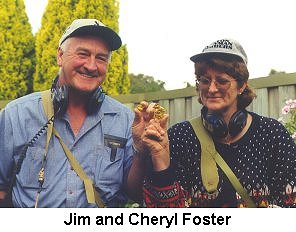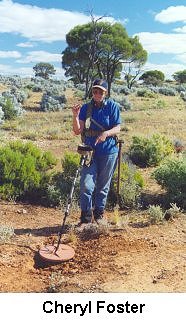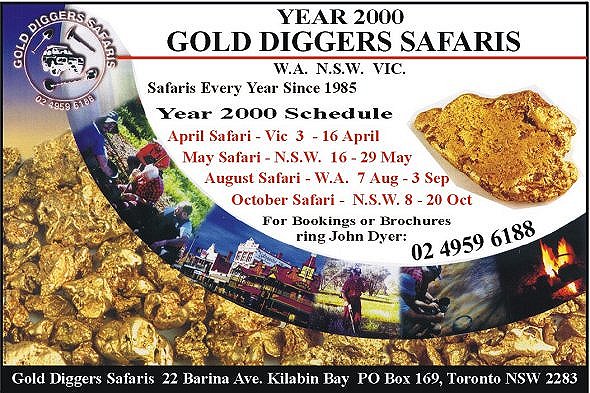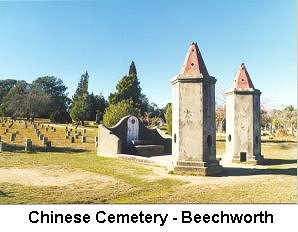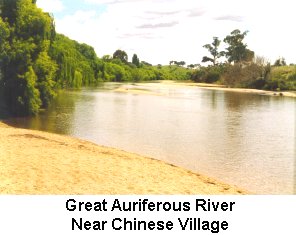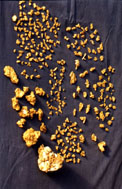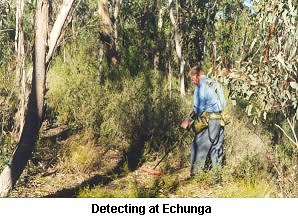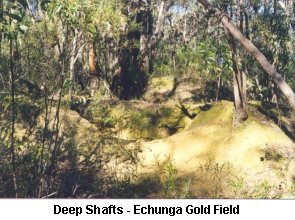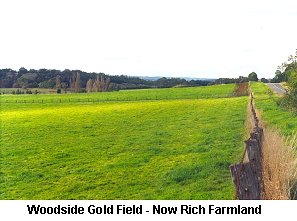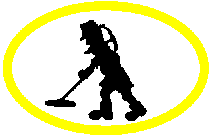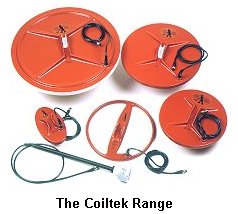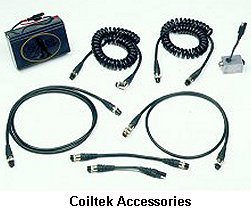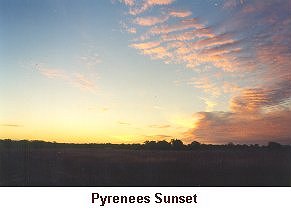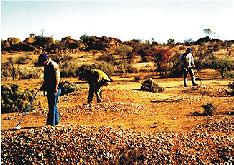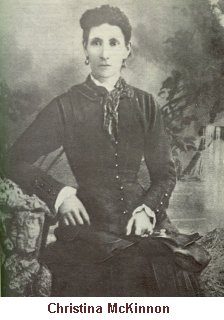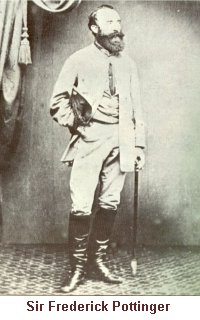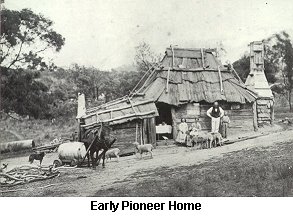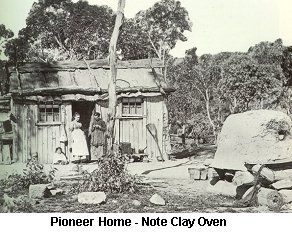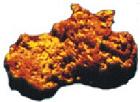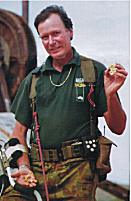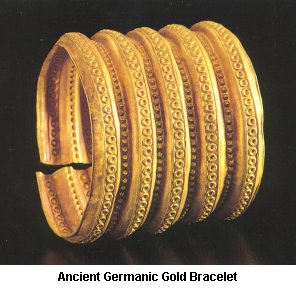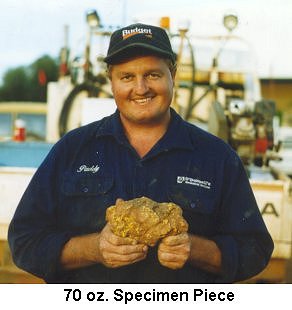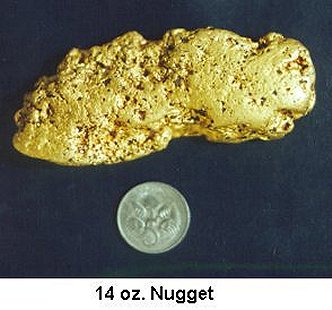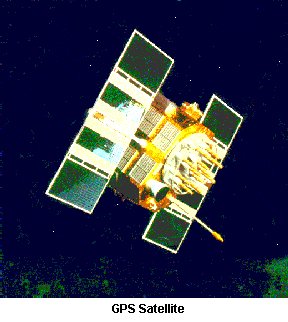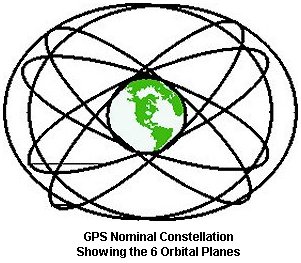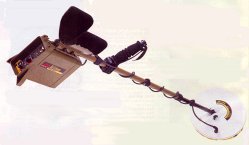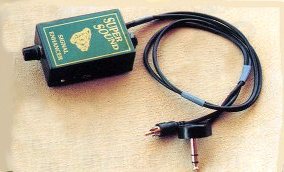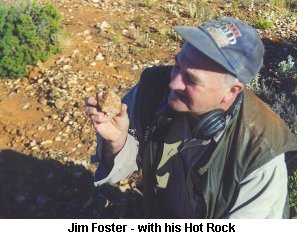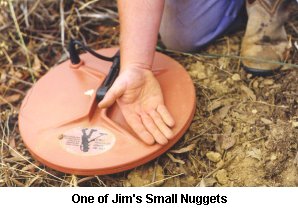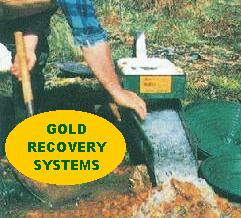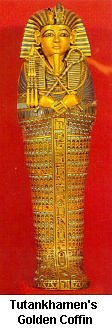
| June 2000 | |||||||||||||||||||||||||||||||||||||||||
|
|||||||||||||||||||||||||||||||||||||||||
Contents
|
|||||||||||||||||||||||||||||||||||||||||
| 1. EDITORIAL After several months of research and negotiations - Gold Net Australia Online - is taking a new direction. Our loyal clientele will have priority access, using your same user name and password. NOTE: The new login will not require an email address. The site will change somewhat in appearance. These changes have been kept to a minimum. No further billings will occur after the 15th June 2000. However, the focus will change from being a full magazine dealing with Australian Gold issues - to a tourist orientated magazine for international visitors who wish to detect and sluice this fabulous country for gold.
Information contained in each issue will relate more to what Gold Net Australia Online has to offer the international visitor - and will include general information about this wonderful and diverse country. We are pleased to announce the appointment of Mr. Clay "Silver" Currence, as our sole agent in the USA and Canada. "Silver" is about to visit Australia and will be visiting ALL the gold tour locations whilst here. Upon his return to the USA - "Silver" will promote our Gold Tours at Trade Shows and through other advertising mediums within the USA and Canada.
A number of other tour products are being developed - and will cater for a diverse range of clients needs. Our first article this month deals in more detail with our new direction. We are sure you will appreciate the simple format of the new magazine and the content will remain, informative, reliable, and focussed towards international visitors.
Email: [email protected] All material in this magazine is copyright and may not be reproduced in any part or form whatsoever without written permission from the publisher.
|
|||||||||||||||||||||||||||||||||||||||||
|
2. FUTURE DIRECTIONS - GOLD NET AUSTRALIA by Brad Williams
Gold Net Australia Online commenced in February 1999, essentially as a gold magazine promoting Australian gold to the world at large. Australia being such an auriferous place hides a wealth of opportunities for detecting and sluicing throughout vast tracts of this highly auriferous island continent.
To this end - Gold Net management has moved to make a commercial decision and promote effectively the fabulous gold fields that still exist in this country and are available for ALL to see and participate. It should be noted that with the opening up of Exploration Leases in Western Australia, vast new auriferous ground is opening up for all to detect.
However - we will keep the magazine functioning albeit in a reduced form, and concentrate on providing quality gold tours throughout this magnificent country, using the very best, of the best prospecting this country has to offer.
For some time, behind the scenes - there has been a great deal of activity in organising and establishing the tour routes - concentrating on the most productive areas this country has to offer the gold detectorist - and gold panner. So lets takes a look at what these tours offer: International visitors entering through Melbourne get a glimpse of this vibrant cosmopolitan multi cultural city. The 3.5 million inhabitants revolving around the hub of this economic powerhouse. A day or two to recover from jet lag and take a look around sets the scene for the beginning of this great adventure into the Gold Fields. At Ballarat just a short distance from Melbourne we visit Sovereign Hill, the replica of an old gold town from the 1850's. The Australian Gold Museum is right alongside and we visit there as well. In the evening we attend "Blood on the Southern Cross". The story of the only civil uprising, where blood was shed, at the Eureka Stockade, Ballarat in 1854.
Eventually leaving the Victorian gold fields - we travel by air-conditioned bus to Goulburn in New South Wales - and visit some fabulous old gold sites while en route. Lunching at the world famous Beechworth bakery, we visit some gold sites here before making our way to the Shoalhaven River. At this gold rich river, we are instructed by Martin Marks - the current Australasian gold panning champion who will display some of the best gold recovery sluices available in the world today.
Eventually into the largest city in Australia - the Olympic City - Sydney.
A day or two here before heading back home.
Our other trip to Western Australia is much more towards a frontier. This vast State is larger than all of the US States combined east of the Mississippi. While you are with us - you will be pampered and tutored by some exceptional characters - many who make their living as professional prospectors. We do provide at least one experienced instructor for every five who visit whilst in the field. This applies both for detecting and sluicing. Now although these tours are organised and we stay in quality motels - more diverse tours, catering for all levels of excitement and incomes and well under construction. Stay tuned for great golden adventures down under! Clay "Silver" Currence, has been appointed as our agent in the USA and Canada. As Silver is visiting here in a few weeks - he will take back to the USA a full knowledge of the entire tours and will be able to offer first hand advice on visiting this great golden country. We commend these fabulous tours to you. You are assured of a great welcome and a great time. Take a golden trip down under and enjoy the experience of a life time.
|
|||||||||||||||||||||||||||||||||||||||||
|
|||||||||||||||||||||||||||||||||||||||||
|
|||||||||||||||||||||||||||||||||||||||||
|
|||||||||||||||||||||||||||||||||||||||||
|
3. GREAT GOLD FIELDS OF VICTORIA by Cecelia Roberts During the 1850's some of the most productive gold fields found in the world poured forth gold in unbelievable quantities. The nuggets found in this highly auriferous ground included the largest in the world, the "Welcome Stranger". Those of us who detect for a hobby, have our special places and our pre-conceived ideas as to exactly where the gold really came from. I held those views too, but recently when I did some research, I found that where I thought the gold was or had come from displayed a very limited understanding of exactly where it did come.
It should be recognised that although what is disclosed are the official figures, the real figures are more likely to be close to double these figures. The government collated figures are from actual gold sold and or recorded officially.
But among other gold fields that hold surprises are the Castlemaine - Chewton area at 180 tons, and Stawell, with 90 tons - and still producing.
Something of interest to the detector enthusiast is that both Beaufort and Haddon produced over 7 tons - totally from alluvial production.
This is a great guide for detectorists - it not only provides an insight into just where the gold was found right from the beginnings of the gold rush period - but gives a good guide into the alluvial deposits and their volumes throughout the great gold fields of Victoria.
|
|||||||||||||||||||||||||||||||||||||||||
|
|||||||||||||||||||||||||||||||||||||||||
|
|||||||||||||||||||||||||||||||||||||||||
|
|||||||||||||||||||||||||||||||||||||||||
|
4. HSIN CHIN SAN by Jim Foster Anyone who has used a metal detector to search for gold or coins in the eastern goldfields has found, or at least seen, old Chinese coins. These coins were left, strewn around the diggings, by the thousands of gold hungry Celestials who streamed into Australia last century. I have personally found many of these coins on goldfields all over Victoria. The detector club I belong to, the South Eastern Detector Club, researched part of the old Chinese Trail from Robe in S.A. and found several caches of these coins that numbered in the hundreds. Although the coins were practically worthless they started me wondering about the people who lost them. Who were they? What parts of China did they come from? How did they get here and what motivated them to endure the incredible hardships? I found most of the immigrants from China's Kwangtung Province, which is near the Pearl River Delta. This area is south of Canton and west of Macao. Tucked away in low-lying valleys and foothills, there were hundreds of towns and villages, most of which had populations in excess of a thousand.
To maximise the benefits to a village or town, the Elders would select from all the volunteers wishing to try their luck on the diggings, those they thought most suitable for the task. Youth and intelligence were the most desirable attributes in any potential emigrant. But to ensure his roots were planted firmly in the village, a married man would be given first preference. Single men were not barred as many were betrothed from childhood and a marriage ceremony could quickly be arranged before departure. The family and family life was all. These ties had to be maintained at all costs to ensure the emigrant sent as much money as possible home to his family and would eventually return himself, bringing, it was hoped, his wealth from the goldfields of Australia, the land they called Hsin-Chin- San or "New Gold Mountain." In Australia, the Chinese were looked upon as being of an inferior, race when in fact they represented the cream of the "Middle Kingdom," as the Chinese called their homeland. They were young, intelligent and many were tradesmen of one kind or another, but they were also victims. Victims of their own countrymen and later of every other race represented in Australia at that time. Being mostly poor people, few Chinese could afford to emigrate on their own resources so they went to the people who ran the credit-ticket system. There were many variations on the credit-ticket system but generally the broker paid for travel fares and put up enough money to set the potential gold digger up with all his requirements to find gold. In return, the emigrant undertook a lien on his services until the debt was cleared. Backed by relatives, perhaps with land, or the personal guarantee of the village elders, he worked long and hard to pay off his debts. It was when he undertook this lien that the emigrant became vulnerable to dirty tricks. Arriving at Canton or Hong Kong, the emigrant was forced into a barracoon. Here he would stay until he was shipped out. The barracoons were dirty, crowded, and full of opium pushers and gambling con-men placed there by the credit-ticket broker. If the emigrant could be induced to take to opium he would forever after be supplied, at a price, by the broker. A customer hooked for life.
The ship Anielia weighing 340 tons and carrying 270 passengers, sailed into Melbourne after 254 days at sea. She had exceeded her passenger allowance by I00 persons. Captain Moore of the Amelia was fined, in addition to costs, 225 pounds. Half this amount was paid to the passengers, who had been fed only rice on the voyage.
The Victorian government, alarmed at the seemingly unending flow of Chinese, implemented a IO pound a head landing tax on the Chinese to try and stem the tidal wave of Chinese gold seekers. But by this time, there were enough Chinese, both in Australia and China, who knew enough to devise a scheme around the problem. In total about 50,000 celestials make this perilous journey - many never to return to the homeland and the families they left behind. Some went mad and were kept in lunatic asylums that were built, and were a normal part of the government buildings erected. Others married and remained to found dynasties of their own in this great land. But the vast majority eventually returned home, their great trip to Hsin-Chin-San, the New Gold Mountain, was over.
|
|||||||||||||||||||||||||||||||||||||||||
|
|||||||||||||||||||||||||||||||||||||||||
|
|||||||||||||||||||||||||||||||||||||||||
|
|||||||||||||||||||||||||||||||||||||||||
|
5. SOUTH AUSTRALIAN GOLD by John Gladdis Adelaide is a city of just over one million people. A delightfully laid out city with a climate hard to rival anywhere in the world. Perhaps it gets a little hot here through summer - but in winter if it gets below freezing at all - it's the exception, not the rule. Most winter days are about 15c (60f) - so winter is an excellent time to detect through the Adelaide Hills. Essentially this country although not exceptionally auriferous still held a good quantity of gold, and still does, even if most of it is now on private holdings. The majority of the locations are contained within the lower Mount Lofty Ranges, adjacent to the city of Adelaide - that sprawling metropolis of just over one million people, which is the capital of South Australia. The lower end of these ranges stretch southwards to the Fleurieu Peninsula, and to the north to the Barossa Ranges, that skirt the world famous Barossa Valley - noted for its fine wines.
The first gold found in South Australia was found at Montacute - now a suburb of Adelaide, in 1846. Although small in quantity and quality it encouraged others to seek gold throughout the Adelaide Hills, and in 1852 at the height of the Victorian gold rushes, payable quantities were found at Echunga. Today the Echunga area still gives up good gold, and the small creeks that flow from this area into the Finniss River, still carry good quantities of good gold. In all the Echunga gold field has given up over 100,000 ounces and as previously stated there is still good gold there.
The Barossa gold field was opened up rather late in 1868, and produced an estimated total of 100,000 ounces. The gold here was hard fought for and was mainly at depth. At Para Wirra National Park there is a very well laid out trail that follows the gold reefs down the side of Victoria Hill and even further down to the Belle of Barossa Mine, and the Royal Phoenix North Tunnel.
The Angaston gold field was relatively small and gained fame in 1896 when gold was found just south of Angaston. The largest pieces of gold here were less than one ounce, and total production was only about 1,500 ounces. Birdwood, situated towards the back of the Adelaide Hills, had about 170 individual mines and produced a total of about 20,000 ounces. Gold was first found in this region in 1869. Most of the gold was at depth but in 1894, 800 ounces of alluvial gold was obtained in 3 months north east of Mount Torrens.
The Deloraine goldfield is north east of Kersbrook and although the majority of gold was found at depth it adjoins the Mount Crawford State Forest, which contains the famous Watts Gully field - that is still giving up gold. The Forest Range gold field was first rushed in 1854 and produced in total about 6,000 ounces. Successful prospecting was carried out here for over 30 years. Gold was still being recovered here as late at 1930 in commercial quantities.
Lobethal gold field situated just west of the town produced about 400 ounces. A little further south at Woodside near Inverbrackie, deep mines gave up about 23,000 ounces, and even further south near Oakbank, home of the biggest picnic race meeting in the world a further 400 ounces was taken from alluvial diggings.
The Para Wirra goldfield near Gawler certainly holds more gold. It is a highly auriferous area and although records are somewhat scant - it is estimated that over 20,000 ounces came from this area. The Lady Alice Mine, now part of the Humbug Scrub Wildlife Reserve, produced over 6,000 ounces of gold.
It is well known that gold still lies here in quantity, as it does within the National Park adjoining. Pity we can't get in there with a detector. What is obvious from the above is that the Adelaide Hills has more than a sprinkling of gold throughout. The detectorist essentially overlooks this area, and almost always heads for Victoria or the more ambitious to the Western Australian gold fields. Clearly many of these areas have probably never had a detector over them, and with a little effort - gold is there for the taking.
|
|||||||||||||||||||||||||||||||||||||||||
|
|||||||||||||||||||||||||||||||||||||||||
|
6. PYRENEES GOLD by Jim Foster On the western edge of the harsher rounded ridges and peaks of the Pyrenees Ranges. Gold was found in many of the gullies and creeks that drained the ranges, both to the east and the west. The eastern side of the watershed was the richest. Names such as Avoca, Moonambel. Redbank, and Fiddlers Creek became well known as the crowds of diggers following the new rushes surged here and there to the tune of every whispered rumour and suspicion.
Avoca was perhaps the first of the Pyrenees diggings to be opened. Gold was found there late in 1853 and soon there were hordes of prospectors roaming the nearby hills oblivious to the fact that gold had been found on the opposite side of the range as far back as 1847.
Shortly after this Richfould left the employ of Mr Beilby and returned to the scene of his discovery, the easy collection of gold no doubt being more enticing than the lonely, thankless task of shepherding. Little was heard of his movements after this but his death was shortly afterwards reported in the Mt Gambier district.
Beilby kept Richfould's secret, more in worry of what a rush for gold might do to the fledgling colony's rural economy than anything else, but with the discovery of gold in NSW, and the subsequent immediate and enormous drain on Victoria's manpower, he was forced to consider the terms of the agreement. The NSW gold rush attained the status of a public emergency, for Victoria at least.
The investigating party included a returned Californian digger, Mr David Armstrong, Captain H.E.P. Dana and a contingent of native police. However, for various reasons, the expedition's departure was delayed and in the end, forestalled by the news of the discovery of the Clunes goldfield.
|
|||||||||||||||||||||||||||||||||||||||||
|
|||||||||||||||||||||||||||||||||||||||||
|
|||||||||||||||||||||||||||||||||||||||||
|
7. BEN HALL - BUSHRANGER - PART 5 by Craig Wilson The Hall gang had been operating throughout the highlands of New South Wales when, where and how they wished. The undermanned, under mounted and certainly out gunned police did what they could with limited resources to capture the gang - but as the boldness and sheer audacity of the bushrangers became more brutal public support was at last turning against them. The murder of Sergeant Parry was clearly a turning point in public support for the antics of the notorious gang.
On December 22nd Hall and two others held up a lemonade vendor at Illalong robbing him and his companion. Two others were robbed in the same vicinity.
The three women entered the store and a few minutes later the three men Morriss has previously had seen came in and shouted "Bail up."
As was the practice at the time each community held race meetings and horse racing was a well organised and well attended sport even in those early days. So it was that on the 5th and 6th of January 1865 that a race meeting spanning the two days was to be held at Wowingragong, near Forbes. The police commander in the area, Sir Frederick Pottinger rode in the last race of the first day. Hall and Gilbert certainly attended in the vicinity of the race meeting and rumour got back to Pottinger that the bushrangers had stated that if he rode the next day they would cut him out and deal with him.
Pottinger took this seriously, and placed men in plain clothes around the track.
In the race Pottinger lagged so far back the bushrangers could have easily cut him out. They did not appear however.
This action on the part of Pottinger, rather than bringing him rewards, brought the wrath of the police hierachy down on him, as it was considered highly improper and was against regulations to enter a public race being on duty. The reaction from the local community at Forbes was almost without precedent with support coming from all sections of the community including the newspapers. A petition was taken up and was strongly supported. The Burrangong Argus, in their editorial stated, "Sir Frederick has distinguished himself with courage and the paper would back up the petition with all their heart, believing that the dismissal of Sir Frederick Pottinger at any time would not be justified by results and that at the present time it would be most disastrous."
On 24th January the gang attacked the mail coach coming from Yass to Goulburn. On board were two constables escorted a lunatic, and upon being fired upon returned fire using their rifles. Gilbert returned fire but the bushrangers apparently thought better of the attack and rode away. A short time later they robbed Beans Inn near Gunning. On January 26th the gang held up and robbed no less than 10 travellers just south of Goulburn. A party of police, who happened upon the scene, drove off the bushrangers. A few hours later they turned up on the road just outside the town of Collector. Here they took 5 prisoners who happened along. With the prisoners before them they rode into town about 6pm. Dismounting outside the Commercial Hotel, they entered the premises and robbed all present. A young girl, noting the events ran to the local lock up keeper, Constable Nelson, and informed him of the bushrangers presence.
Taking up his muzzle loaded rifle he strode up the street towards the hotel and when he neared, was challenged by Dunn. Nelson kept advancing.
Nelson has been accompanied by his young son Frederick, and as he ran from the scene Dunn fired at him. Hall and Gilbert came from the hotel towards Dunn, and upon seeing the Constables body approached it - took his weapon and Gilbert then robbed the poor mans body. None of the bushrangers showed any remorse for their actions and in fact returned to the Inn where they stowed their booty and then rode away.
|
|||||||||||||||||||||||||||||||||||||||||
|
|||||||||||||||||||||||||||||||||||||||||
8. FLECKS ! - Glints from here and there
|
|||||||||||||||||||||||||||||||||||||||||
|
|||||||||||||||||||||||||||||||||||||||||
|
9. PIONEER WOMEN by Craig Wilson Much had been written describing the gold fields of the grand era in Australia during the two decades from 1850 -70, but little has been detailed of the trials and tribulations that all had to endure and suffer as they pioneered this great country. In particular the women of the era stand alone as great stalwarts at a time where great prosperity, was accompanied by unspeakable hardships. These women came from all walks of life. Some born and bred in Australia, but a good percentage from more sophisticated European societies. The trials and tribulations they suffered and endured and in most cases conquered, is a testament to their pioneering spirit, tenacity and sheer guts and determination. Accompanying their husbands into the gold fields as a good many did, her first task was to help construct some type of mean dwelling that would provide shelter to keep them warm and away from natures moods. In many places in Australia, timber and water was scarce, so selecting a suitable site for a dwelling was difficult in these locations. The dryness of the gold fields particularly in the summer months was always a concern, and certainly locating suitable water was of paramount importance.
Inside the only divisions were by hessian bagging sewn together and painted with whitewash to provide some privacy. These pioneering women then made the dirt floor as even as they could and stored their few possessions and in most cases started a family. Pregnancy in those early days was a difficult time for a woman. Perhaps not during the pregnancy itself, but as doctors were scarce in those times and their knowledge fundamental a considerable number of women lost their lives during childbirth. These women knew these risks but still accepted them gladly. Most were attended by a midwife during childbirth, as it was accepted practice. No drugs as there are today, no clean hospitals, and in a great many cases, just their husbands to tend to them as they gave birth. They were tough, and in most cases retained their femininity, as can be seen from the photographs of the era. The mortality rates from childbirth were extremely high - not just for the women but for their unborn infants. If you visit some of these old cemeteries you will find a large number of headstones that detail these death rates. Some of these gravestones make compelling reading, and provide a substantial insight to the difficulties of the times.
As these dwellings were in general open structures, and not completely sealed to outside elements, a daily routine was required to keep the dirt floor clean of debris and food scraps that enticed insects to a food source. Coupled with this the ever present dust during summer required a daily necessity to entirely dust the house and sweep unwanted dust outside. Early photos often show a straw broom propped outside, indicating it was a well used tool. It was a woman's work to keep the essentials of the home in place. It was her duty to daily collect water, and either purchase or gather food for her family. The most pressing difficulty in Australia was water. It was often necessary for her to walk several miles to collect water, not just for drinking, but for washing, and for cooking purposes as well. If she was lucky a wooden water barrel would be placed outside the dwelling, and filled be her daily. Many women sourced and foraged through the bush for food and butchered animals to provide the necessaries for their young and growing families. Most grew vegetables near their homes to provide. In the gold fields there was an element of support as store holders quickly moved into these areas and provided a great deal of the necessities of life - at a price. Sharing resources was a common practice and a vital necessity for survival. In a lot of cases although men were primarily involved in digging for gold their women often stood alongside them and shared the work load, particularly in the early gold rush days. This was not a common occurrence but some women provided total support to their men in undertaking this role as well as looking after their homes. They would dry sieve the gold and generally do those tasks that did not required heavy manual labour in the fields. There were some tough women out there, and many stories of their sacrifices abound. Perhaps the most disastrous situation that arose from time to time was the difficulties that arose when serious diseases and epidemics swept through communities. With very little support from medical resources and no drugs to assist, many women lost children and in some instances, their own lives, while tending for them, catching the disease themselves. As her children grew there was a necessity to educate them and if schools were not nearby it was her duty to provide the necessary instruction to ensure her children had a future. Providing the total necessities for her growing family herself was indeed a labour, but a labour of love for these great pioneering women. I salute them for what they as a group accomplished.
|
|||||||||||||||||||||||||||||||||||||||||
|
|||||||||||||||||||||||||||||||||||||||||
|
|||||||||||||||||||||||||||||||||||||||||
|
10. MAN AND GOLD - Part 4 by Jim Foster From the earliest of days gold has had value. Even if it was that a nugget made a handy missile heavy enought to stun a small animal. It soon became valued as personal ornaments and it is thought that gold was probably the first metal to be smelted and beaten into objects that could be usfully utilised by people. By the time nations had arisen most of the easy gold was gone, the most obvious choice was then to mine the rich quartz reefs that had shed the free gold. But hard-rock mining was hard and dangerous work that free men did not choose to do. The answer was to use slaves. These were expendable, their lives, while valuable had less value to their captors than did the gold they could mine. Lacking metals hard enough to crack the brittle quartz one of their earliest methods of mining gold from the host reef was to light a fire up against the face of the reef. Stoking the fire day and night until the reef was super heated was another job for the slaves, but then came the real danger. So dangerous was the next step that only slaves of low value were used. Sour wine was to be poured over the red-hot quartz reef from large skins. Standing on scaffolding just above the reef the slaves would release the wine so it sluiced down over the reef, exploding into clouds of steam as it contacted the rock. Thermal stressing of quartz often produces a violent reaction, an explosion of sharp edged quartz shards will explode outward like the shrapnel of many hand grenades exploding at once. Slaves often died a horrifying death from either breathing in the superheated steam, being sliced to bits by flying quartz shards, or from falling onto the hot quartz, often a combination of all three. As civilisation progressed and better metals were discovered mining of gold became safer, but only maginally so. With better metals and a greater knowledge of geology mining methods allowed the following down of gold bearing quartz reefs and deeper alluvial leads. Now it wasn't so much death from flying quatz shards that threatened lives but falling rock, bad air, and in-flooding water. For slaves the method of dying differed from earlier times but they still died in large numbers and still in horrifying circumstances.
As mans knowledge of metals and mining methods grew, mining became safer. And by the time the great goldrushes of California and Australia came about mining was considered much safer. Hard-rock mining was still an uncertain science but better and safer methods were being employed. It was only places such as in Russia, China, and some third world countries that prisoners were being forced to dig for gold. As the world moved into the twentieth century gold mining had become almost as safe as any other employment. With the introduction od heavy machinery it was no longer as hard as work as it had been. Even underground hge trucks and mining shovels did the hard work. Now, as the millenuim clock ticks over, much of the underground work is being done by remote control and it it is rarly that a miner dies from an accident. In fact, today, a miner is often safer underground than he is driving home from work. Many mines now don't even have underground drives, they mine by the open cut method, huge, yawning, pits that drive day by day ever deeper searching for more and more gold. Of all the gold ever mined since the first ingot was smelted much of that gold still remains in circulation today. As new gold is mined and smelted so too is old gold jewellery, often stolen, resmelted. Gold that once adorned Cleopatra, Helen of Troy, and the crowned heads of Euope is still in circulation. That simple gold wedding ring you wear as a symbol of love may well contain gold that Cleopatra wore on her last night on earth, but the poison of the asp will be long gone.
|
|||||||||||||||||||||||||||||||||||||||||
|
|||||||||||||||||||||||||||||||||||||||||
|
|||||||||||||||||||||||||||||||||||||||||
|
|||||||||||||||||||||||||||||||||||||||||
|
11. STRIKES Recent Finds
|
|||||||||||||||||||||||||||||||||||||||||
|
|||||||||||||||||||||||||||||||||||||||||
|
|||||||||||||||||||||||||||||||||||||||||
|
|||||||||||||||||||||||||||||||||||||||||
|
12. GLOBAL POSITIONING SYSTEMS by Sue "Goldie" Reynolds Many of us carry and use a GPS (Global Positioning System) when searching for gold. In most instances we use it as a navigational aid - to log a site where we have found some gold, and simply use the aid to mark the site so we can return at some time in the future. Additionally we use it as a navigational tool in conjunction with topographical maps to find specific locations. We know it works by satellite technology - but very few of us realise the complex web of technological facilities that actually makes this fabulous system work for our benefit. The origins of using satellites as a navigational aid can be traced to as early as 1945, when a science fiction writer used the theory in his writings. Later, during the Vietnam conflict satellite technology developed rapidly and it was well known that using this facility, satellites could spy from the sky with remarkable accuracy. US spy satellites could read Russian newspapers in Moscow as they came off the press - and no doubt Russian satellites had a similar capability. Recognition of the fact that spy satellites had such a capability resulted in most US Federal Agency buildings having their windows blacked out, in the early 1970's.
Now how this system works is a highly sophisticated and well-organised global system. At any time there are 24 satellites, orbiting the earth on 6 planes, with 4 satellites on each orbit, spaced 60 degrees apart, and operate on an inclination of 55 degrees, to the equator. They are configured so that at any one time from any point on earth between 5 and 8 satellites are visible. These satellites are located at a height of 20,200 km. from earth and orbit the earth each 12 hours. At times there are more than 24 satellites in orbit as older vehicles are taken from service and replaced. Each satellite transmits two microwave carrier signals. The L1 frequency (1575.42MHz) carries the navigational message and the code signals. The L2 frequency (1227.60MHz) is used to measure the ionospheric delay by PPS equipped receivers. GPS systems need 4 satellites to decide a position on earth. The first three are used to decipher location with the fourth used to evaluate time. Known as X, Y, Z and Time. Navigation in three dimensions is the primary function of the GPS. The Master Control facility is situated at the USA Schriever Air Force Base in Colorado. This master control facility, is supported by a massive global network of monitoring stations. At this time there are 236 stations world wide monitoring these 24 satellites. Among these stations, there are some who collect data, others analyse, and invariable provide to the world collated data on line within 24 hours. There is a hierarchal system applying to these facilities. Tracking stations collect raw data, which are forwarded to the Operational Data Systems facilities, called a Receiver Index Exchange (RINEX) Formatted data is then forwarded to the Regional or Global Data Centres. Data not used for global analyse are archived and are made available for on line access at Regional Data Centres.
The signal that we receive as private citizens using this system is deliberately degraded. We are provided with a signal that is accurate to about 100 metres. As those of us know who use a GPS - the accuracy is often about 20 metres, and I for one am quite happy with that degree of accuracy. The system was initiated in the early 1980's the final satellite configuration was not completed until March 1994. Although initially developed as a global positioning system, recent developments have included providing material and data for improving and extending the International Earth Rotation Service. Terrestrial Reference Frame, monitoring deformations of the solid Earth, and variations in the liquid Earth (sea level, ice sheets etc.), and in variations of the Earths rotation, determining orbits of satellites and monitoring the ionosphere. Coupled to these initiatives are the private companies who manufacture and sell hand held GPS systems to the public. We are familiar with Garmin and Magellan GPS systems and use them without a second thought to the technology that supports this amazing system. So next time you turn on that GPS - just recognise that what you have in your hand is not just a great system to find your way around Terra Firma - it is a great gift.
|
|||||||||||||||||||||||||||||||||||||||||
|
|||||||||||||||||||||||||||||||||||||||||
|
|||||||||||||||||||||||||||||||||||||||||
|
|||||||||||||||||||||||||||||||||||||||||
|
13. A DAY TRIP by Jim Foster
The insistent buzz of the alarm drilled deep into my brain seeking out my consciousness and giving it a kick-start back to wakefulness. After a quiet and nervous breakfast I grabbed my detector and with silent step made my way outside to wait for Rob, who was picking me up. Exactly on time, 5 a.m., Rob pulled up and I threw my gear into his car. We were off for a one-day trip to the Victorian goldfields. Living in Mount Gambier South Australia, it's a good 21/2 hour run to the nearest diggings, the Ararat and Stawell fields. These diggings are not renowned for their big nuggets but we had found a hill that had been surfaced below the cement cap where the diggers of old had missed large numbers of small pieces of gold. I say "pieces", as one would have to stretch one's imagination to great lengths to be able to call them nuggets.
From 9 a.m. till 10 a.m. I found a total of five nice little pieces. None of them were any size but every one of them looked great as they came out of the ground. The hillside was hard and dry, so hard in fact that I found I was bruising my knees when I knelt to search for the targets the detector said was there. Very little rubbish is on that hill and almost any signal will be either a .22, a lead shot, or it will be gold. The lead shot is thick in places and very hard to find. A round number six shot is tiny and will roll away as you try to pick up the dirt it is in. It will slip between your fingers and bounce down the slope amongst the quartz and ironstone pebbles ensuring you waste a lot of time searching for it - but it could be a tiny bit of gold so you keep looking - and cursing - as it eludes you once again. By 10.30 a.m. I had satisfied myself there was nothing left on that patch and had just sat down for a rest when Rob came around the hill from where he'd been searching. He'd had no luck and as it had been a long time since breakfast, we decided to work down the hill towards the car. I picked up another little piece on the way bringing the total to six. We were just finishing lunch when along came Ted Pullen, an old friend of ours wielding his detector. As Ted had had no luck I elected to give him a few clues on the finer points of searching for tiny bits of gold. At first I thought I'd find a few lead shot and show Ted how to separate them from the dirt but no matter how hard I looked I couldn't find one shot. At last I got a solid little signal and looked down thinking to see a shot lying on the surface. It wasn't lead, it was a nice shiny little bit of gold that winked back at me. Calling Ted over I showed him the general area and asked him to run his detector over it. No worries, he soon found the gold. I pulled another 2 pieces off that patch but unfortunately Ted never found any of the pieces he walked over, I didn't find them either until I got desperate a couple of hours later.
Taking a wide loop over the top of the hill I found only one piece and that was a stray without a friend to be found. By 3 pm I was looking for every tree and the welcome shade thereunder. Sticking to the shady spots and venturing into the harsh sun only to cross from one shady patch to another I worked my way across the hill face. Ten pieces I had but I couldn't turn up another for the life of me so I headed back towards the gutter where I'd found the three pieces immediately after lunch. On arrival I dropped onto a patch of number 4 lead shot. Diligently I recovered every bit of shot - there must have been dozens - and then was on another patch of gold. Every signal it seemed was gold. In no time I'd passed Rob's best score and was setting new records. Movement over the shoulder of the hill caught my eye. Rob was back at work. I knew he'd been down to the car for a drink and a rest while I'd continued -working. I wandered over to where I could see he'd been very carefully working a small bank. "Any luck?" I asked, knowing he was onto a patch. "A bit," he said grinning but not looking up from where he was pin- pointing a target. "How many?" I asked, worried by that grin. "Oh, I dunno" he stalled, stretching out his moment. "I lost count - five I reckon," he conceded at least, shooting me a shrewd look. "How many have you turned up?" "Well," I said, "You've got a new record to chase, 16," 1 informed him, savouring my victory. It wasn't often I got in front of Rob. Back over to the gutter and down the other side, working slowly and carefully, covering every inch as I listened for those faint signals from the tiny scraps of gold. One more turned up, then only a hot-rock. I kicked it out of the way and it skittered down the gutter. Later, I found it again. Again I kicked it out of the way and continued. Then I had a moment of doubt, it had seemed a sharper signal than last time. I turned back and picked it up. It was a lump of conglomerate about the size of the palm of my hand. Carefully I looked it over, nothing. Dropping it I hit it with my pick and it broke into three pieces. No signal from the first one, or the second, but a good solid signal on the third bit and I knew there was something in that rock other than ironstone. Carefully searching the face of the stone I finally made out a nugget embedded in the surface of the rock. Eighteen pieces I now had but the heat of the late afternoon sun was beginning to tell, I had been going to go for 20 but as I hadn't had a drink, since midday I was feeling like lead and my throat like old flannel. "Got any more?" I asked with a thick tongue. "Two," came the laconic reply. "You?" I nodded. "Two. You had enough?" He flicked away a hot-rock he'd just dug. "Yeah, I reckon 25 bits between us is enough for one day, don't you." I hardly heard the last bit as I was heading down slope at a pretty rapid rate with my mind already arriving at the drive-ill bottle shop at the nearest pub. We arrived home at 10.30 p.m. that night, very weary but with two new club records in the bag. I had found the most bits of gold ever found by one of our club members in one day. I had also found the least weight for the most pieces of gold. I'm not too sure about the last, whether I should be happy about it I mean, but it sure was a lot of fun digging all those tiny bits of yellow stuff.
Rob has a very good set of scientific scales that we use for these tiny scraps and when we had weighed up we were surprised at the results. My heaviest piece weighed in at a mighty 200 milligrams and the lightest at a mere 40 milligrams. Total weight came to 1,565 milligrams or just over 11/2 grams.
|
|||||||||||||||||||||||||||||||||||||||||
|
|||||||||||||||||||||||||||||||||||||||||
|
|||||||||||||||||||||||||||||||||||||||||
|
|||||||||||||||||||||||||||||||||||||||||
|
14. WORLD GOLD COUNCIL - THE FUTURE by Katherine Knight Last month we reported what Mr. Robert Pringle, the World Gold Council Corporate Director, Public Policy and Research said at the Australian Gold Council conference earlier this year. His comments regarding the future of gold are also well worthy or reporting. IN ESSENCE HE SAID THE FOLLOWING. "I believe that the Washington Agreement will be renewed in some form at the end of the five-year period. It may not be in exactly the same form. But the Washington Agreement demonstrated that the central banks concerned are now aware of their responsibilities to the gold market and to gold producing countries - and we shall, I promise, ensure that they do not forget these. Indeed it is possible that central banks outside the original group may formally join it. How much gold will the banks concerned decide to put on the market the next time round? This will depend on two factors. How much they want to sell or lend, and their assessment of what the market will stand. Some analysts believe that most central banks secretly want to sell their gold. I have argued again and again that this is not so. Some Agreement countries may indeed want to sell more. But in the many years I have been following and talking to central banks and governments I have seen no evidence that this is true generally. Many central banks still believe in gold.
VARIOUS SCENARIO'S It is probably prudent to expect that central bank sales will exceed central bank purchases over the next 20 years. But the core holders will continue to hold on to their gold. The decline in net holdings will continue to be gradual, managed and co-ordinated. This slide shows a range of possible outcomes. None of these, I suggest, should cause undue alarm to the gold markets even if they are accompanied by some net increase in lending. GOLD'S RESERVE ROLE WILL CONTINUE
What then does all this mean for gold's future? My answer is that it all depends on ultimate demand - demand from the consumer and investor. Then there is investment demand. In the United States we have had a very encouraging success with our institutional investment programme for the last three years. We know of 30 institutions which between them have purchased some 160 tonnes of gold - an investment of around $1.5 billion. This may be small beer in the context of a $10 trillion US pensions industry but it is a great start. These purchases have been motivated by gold's role as a portfolio diversifier - its negative correlation to equities and bonds. It is much more liquid than many alternatives.
For these and other reasons we have decided to expand out institutional investment programme and we have appointed a new head of institutional investment to lead this effort around the world. My conclusions are straightforward. Net supply of gold by the official sector will not be on a scale likely to negate the potentially dramatic and profound impact of the industry's own efforts to boost ultimate demand. As long as those efforts are well-judged, consistent and sustained, they can shift the emphasis away from supply from the official sector in favour of demand as the most important driving force in the gold market. The influence of official stocks on sentiment in the gold market, which has dominated discussion in the past 10 years, will inevitably decline in the long run. This is because the share of the total above-ground gold stock held by the official sector is declining, as all newly mined gold goes into private hands. The fate of gold is in the hands of the gold mining industry! No other market participant has such a profound interest in its overall well-being"
|
|||||||||||||||||||||||||||||||||||||||||
|
|||||||||||||||||||||||||||||||||||||||||
|
15. THE NEW LODE - Next Month's Issue
|
|||||||||||||||||||||||||||||||||||||||||
|
|||||||||||||||||||||||||||||||||||||||||
